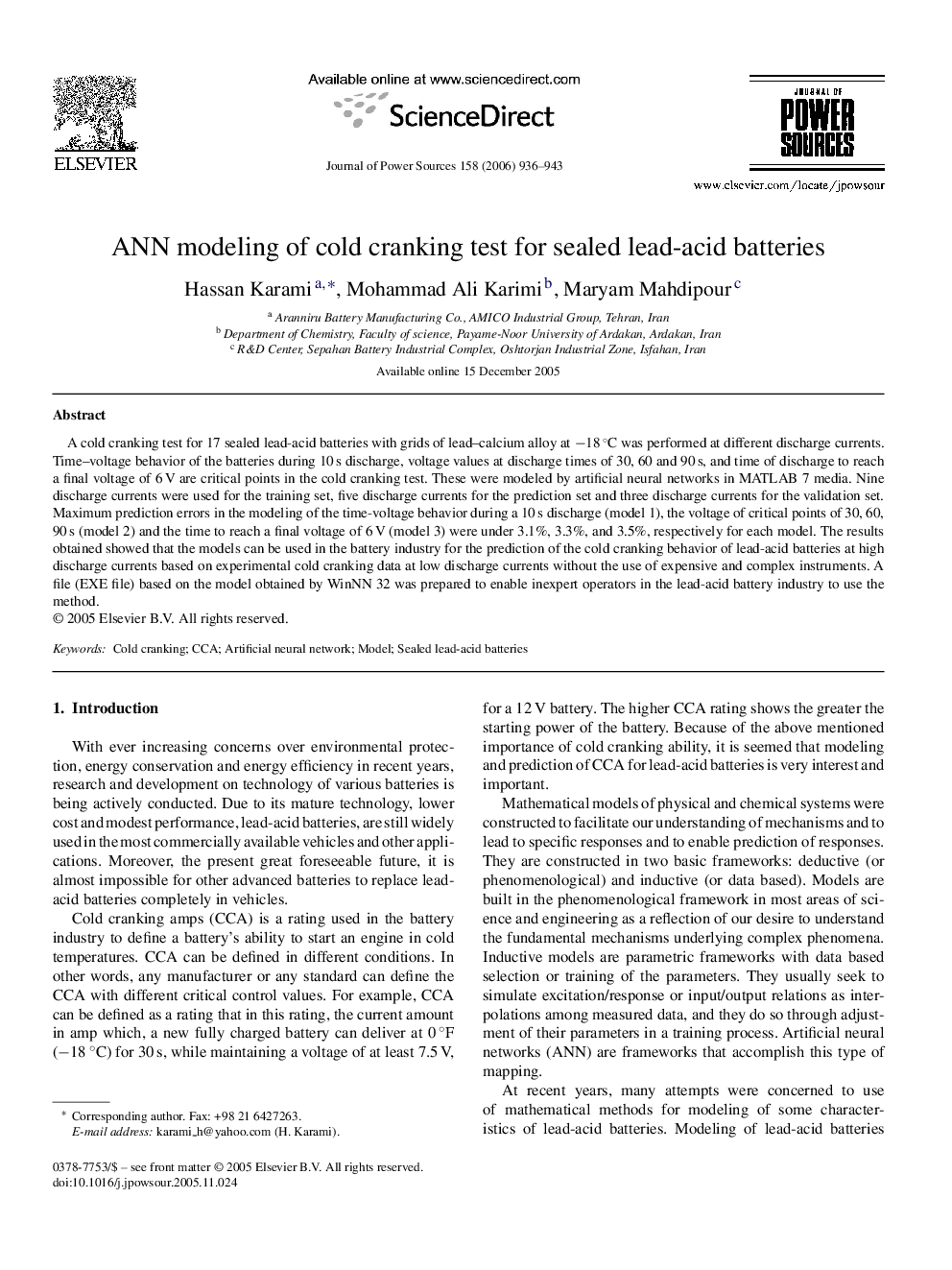| Article ID | Journal | Published Year | Pages | File Type |
|---|---|---|---|---|
| 1287354 | Journal of Power Sources | 2006 | 8 Pages |
A cold cranking test for 17 sealed lead-acid batteries with grids of lead–calcium alloy at −18 °C was performed at different discharge currents. Time–voltage behavior of the batteries during 10 s discharge, voltage values at discharge times of 30, 60 and 90 s, and time of discharge to reach a final voltage of 6 V are critical points in the cold cranking test. These were modeled by artificial neural networks in MATLAB 7 media. Nine discharge currents were used for the training set, five discharge currents for the prediction set and three discharge currents for the validation set. Maximum prediction errors in the modeling of the time-voltage behavior during a 10 s discharge (model 1), the voltage of critical points of 30, 60, 90 s (model 2) and the time to reach a final voltage of 6 V (model 3) were under 3.1%, 3.3%, and 3.5%, respectively for each model. The results obtained showed that the models can be used in the battery industry for the prediction of the cold cranking behavior of lead-acid batteries at high discharge currents based on experimental cold cranking data at low discharge currents without the use of expensive and complex instruments. A file (EXE file) based on the model obtained by WinNN 32 was prepared to enable inexpert operators in the lead-acid battery industry to use the method.
